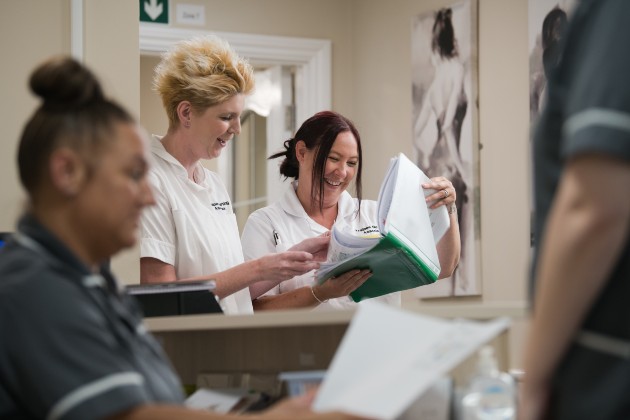Leadership in ћјЌЈћхќџЅѕ is a topic much discussed, but less is said about the flip side: followship. Yet wherever there are leaders, there must be followers.
You might think “follower” implies a passive role – people meekly carrying out instructions, no questions asked.
But Paul Jebb, a member of the RCN Nurses in Management and Leadership Forum Committee, sees it differently.
“To me, the notion of followship is aligning ourselves and our values with another person who can also support us in our own development,” Paul says.
And followship is something the NHS and other health care providers need to take “a bit more seriously”, he suggests.
Followship in action
He offers the pandemic as an example of followship in action and why it matters in ћјЌЈћхќџЅѕ.
Everyone has been tested to the limit. But where the notion of followship was strong, leaders not only inspired and influenced, they in turn were inspired and influenced by those in their teams.
“That then helped the leader to drive forward,” Paul argues. “The two roles complement each other. As a follower you need leaders and as a leader you need followers.”
A leader himself – Associate Chief Nurse for Patient Experience and Engagement at Lancashire and South Cumbria NHS Foundation Trust – Paul says that when he mentors and coaches other staff, sharing knowledge and ways to develop “is where you get inspired”.
So effective followship goes further than being a “good team player”. It implies a two-way relationship with the leader, with the capacity to be a “critical friend”.
Joint responsibility
It’s also dependent on shared governance – joint responsibility for taking forward a particular project, for example, or improving practice.
This gives staff a voice and, it’s argued, because they feel listened to and invested in, they are more engaged and satisfied, leading to better patient outcomes.
“Everyone has a role in making things happen,” says Paul. “Everyone has a role in transformational change, in patient experience and learning from feedback.
Organisational priorities take precedence over individual interests.
Followers also need to influence upwards
But all of the above can be challenging if the follower has little faith in the leader, as Paul acknowledges.
“I think that’s where the ‘shared values’ aspect comes into it,” he says. “Followers also need to influence upwards. Again, it’s about how the leader influences the follower but how the follower influences the leader.
“Influencing is a big skill which we all need to do more of, no matter what our role.”
What else can ћјЌЈћхќџЅѕ staff do to become better followers?
Taking the time to reflect
As with many other aspects of ћјЌЈћхќџЅѕ practice, reflection is key, not just individually but in groups too. Paul suggests focusing on the “why”: Why are we doing things this way? Why don’t we try this?
Asking questions and challenging decisions, providing it is done in the interests of patients and the organisation, encourages leaders to consider options.
Being motivated and committed are, of course, important in followship. “And being open and honest are key in any professional role,” Paul adds.
Critical appraisal of a project, an initiative “and even each other” can help foster those shared values and the shared responsibility that are important in followship.
Prioritising communication
And what more can leaders do to ensure their followers continue to follow?
As well as role modelling appropriate values and behaviour, leaders should prioritise clear communication. “You can never do enough communication, and just checking in: is this going in the right direction and are we all OK?”
He believes that leaders have acquired extra insight during the pandemic, not least about compassionate leadership, both in terms of supporting their teams and how best to derive support from their followers.
You can never do enough communication, and just checking in
Tuning in to what others feel, as well as what they think, has been a significant lesson for those who have led the response to COVID-19.
“Emotional intelligence has been one of the big things leaders have learnt – that it’s OK to say, ‘I’m struggling here and I need some help’.”
It’s important to remember that leading and following are not necessarily distinct and separate roles. A “leader” can, in some situations, be a follower, just as a “follower” can also lead.
Fluidity indicates a move away from authoritarian leadership styles towards something more collaborative.
In summary, followship is not about passivity or being habitually compliant.
As the makes clear, effective followers think for themselves. They are creative and co-operative but will challenge and ask questions.
They are an asset to an organisation because they put its needs ahead of their own interests.
Further information
Learn more about and discover how to join the RCN Nurses in Management and Leadership Forum.








